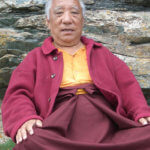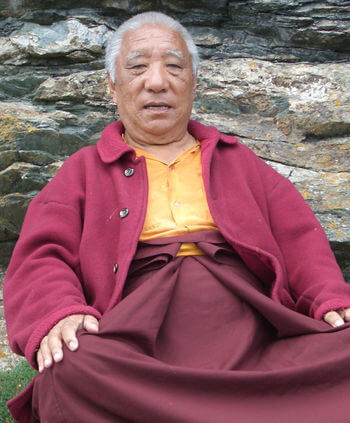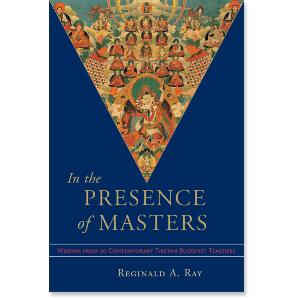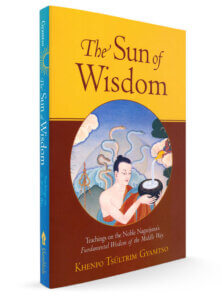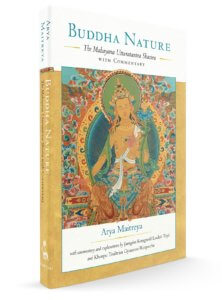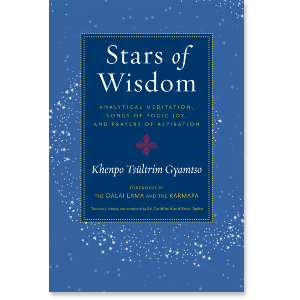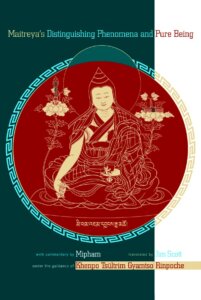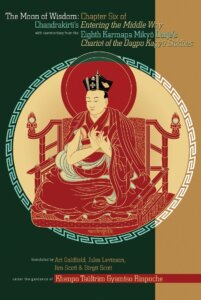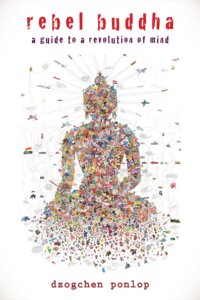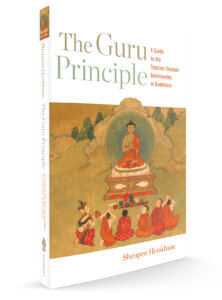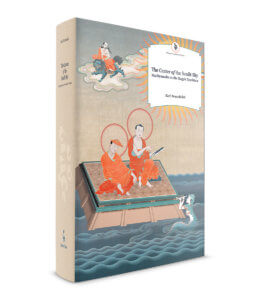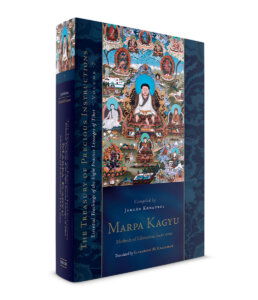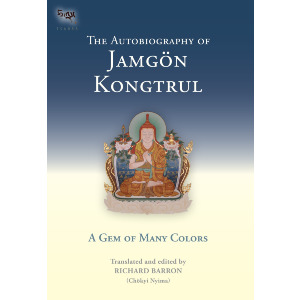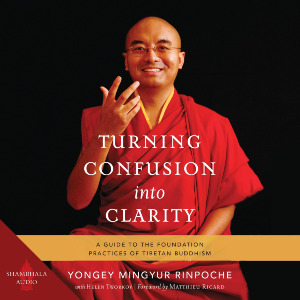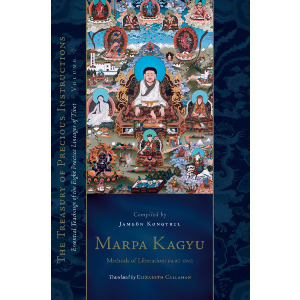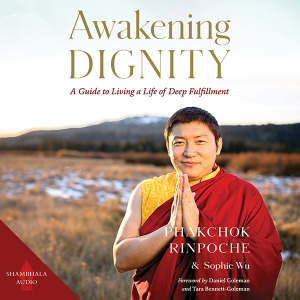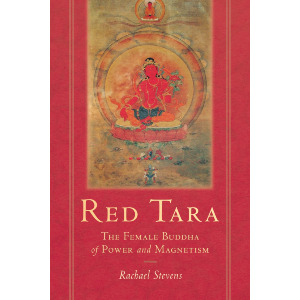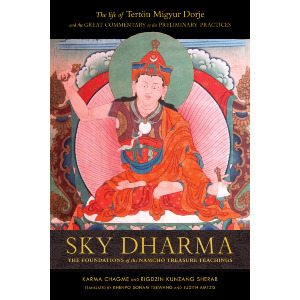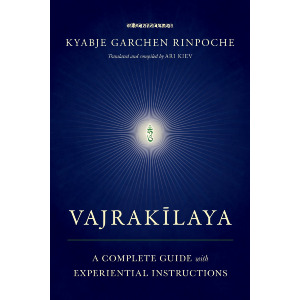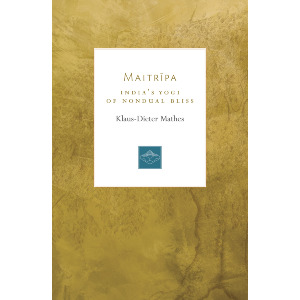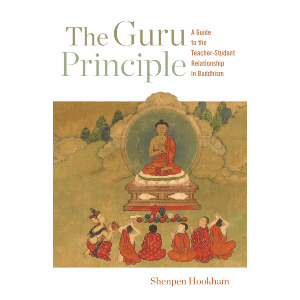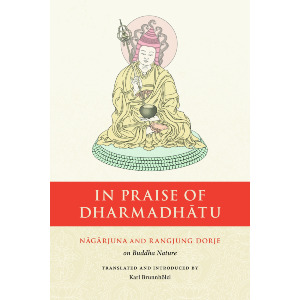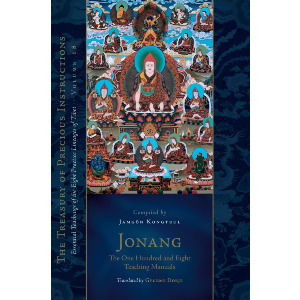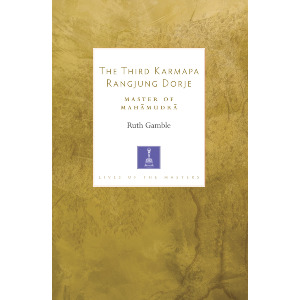Khenpo Tsültrim Gyamtso Rinpoche is a Tibetan Buddhist teacher in the Kagyu tradition. Born to a nomad family in Ngangchen, Kham (the eastern region of Tibet), Khenpo Tsültrim began his training under Lama Zopa Tarchin at an early age. He later attended intensive retreats and continued his training under the lineage holder of the Karma Kagyu, the 16th Gyalwa Karmapa. Since fleeing Tibet in the late 1950's under Chinese rule, Khenpo Tsültrim continued his studies in Northern India and later settled in Bhutan. He is the root teacher of prominent Buddhist teachers such as Dzogchen Ponlop Rinpoche and Lama Shenpen Hookham and therefore plays a significant role in their respective organizations—Nalandabodhi and the Awakened Heart Sangha.
Khenpo Tsültrim teaches widely in the West and is known emphasizing the union of practice and study. He is therefore himself a prolific scholar as well as an accomplished practitioner. Below you'll find longer biography from In the Presence of Masters, a selection of books written by Khenpo Tsültrim, as well as texts written and translated by his students under his guidance.
Short Biography
From In the Presence of Masters: Wisdom from 30 Contemporary Tibetan Buddhist Teachers
Edited by Reginald A. Ray
Khenpo Rinpoche was born to a nomad family in East Tibet in 1934. Drawn to spiritual practice, he left home at an early age to train with his root guru, the yogin Lama Zopa Tarchin. After completing this early training, Tsultrim Gyamtso embraced the life of a yogi-ascetic, wandering throughout East and Central Tibet, undertaking solitary retreats in caves to realize directly the teachings he had received. He often lived in charnel grounds in order to practice and master chöd, a skillful means to cut ego clinging, develop compassion, and realize deeper levels of emptiness. Subsequently he took up retreat in the caves above Tsurphu, the seat of the Karmapas, where he received instructions on the six yogas of Naropa, the Hevajra Tantra, and other profound teachings from Dilyak Tenzin Drupon Rinpoche and other masters. Escaping to India at the time of the Chinese invasion, he was able to continue his training, studying the sutras, the tantras, and all four schools of Tibetan Buddhism He became renowned for his skill in logic and debate, and received a khenpo degree from H. H. the sixteenth Karmapa, and the equivalent geshe lharampa degree from H. H. the fourteenth Dalai Lama. In 1975 Khenpo Tsultrim established the Thegchen Shedra in Athens, Greece, and for the next ten years taught throughout Europe. Since 1985 he has traveled widely, completing annual world tours in response to invitations from Europe, the United States, Canada, South America, Southeast Asia, Africa, and Australia. In 1986 he founded the Marpa Institute for Translators, in Boudhanath, Nepal, to offer intensive courses in language and scripture. Khenpo Rinpoche continued to supervise this annual event when it moved to Pullahari Monastery above Boudhanath. While Khenpo Tsultrim Gyamtso unites prodigious intellect with great compassion, he also embodies the training and temperament of a true yogi. In fact, Rinpoche is often compared to the great yogi Milarepa, whom he resembles in both substance and style.
$29.95 - Paperback
Books By Khenpo Tsültrim Gyamtso
Teachings on Buddha Nature and the Two Truths
Khenpo Tsultrim wrote a commentary for each of the most widely known texts in the Tibetan Buddhist tradition: Nagarjuna's Mūlamadhyamakakārikā, or Root Verses of the Middle Way, and Maitreya's Mahāyānuttaratantra Śāstra, or the Treatise on the Sublime Continuum.
In addition, Khenpo Tsultrim's Stars of Wisdom explains how to access the nature of reality pointed out in philosophical texts such as those above through analytical meditation, songs of experience, and other practical Tibetan Buddhist tools.
The Sun of Wisdom: Teachings on the Noble Nagarjuna's Fundamental Wisdom of the Middle Way
The Fundamental Wisdom of the Middle Way was written in the second century and is one of the most important works of Nagarjuna, the pioneering commentator on the Buddha's teachings on the Madhyamika or Middle Way view. The subtle analyses presented in this treatise were closely studied and commented upon by many realized masters from the Indo-Tibetan Buddhist tradition.
Using Nagarjuna's root text and the great modern master Ju Mipham's commentary as a framework, Khenpo Tsültrim Gyamtso explains the most important verse from each chapter in the text in a style that illuminates for modern students both the meaning of these profound teachings and how to put them into practice in a way that benefits both oneself and others.
Buddha Nature: The Mahayana Uttaratantra Shastra with Commentary
By Maitreya & Asanga
With Commentary By Jamgon Kongtrul Lodro Taye & Khenpo Tsultrim Gyamtso
Translated by Rosemarie Fuchs
All sentient beings, without exception, have buddha nature—the inherent purity and perfection of the mind, untouched by changing mental states. Thus there is neither any reason for conceit nor self-contempt. This is obscured by veils that are removable and do not touch the inherent purity and perfection of the nature of the mind. The Mahayana Uttaratantra Shastra, one of the “Five Treatises” said to have been dictated to Asanga by the Bodhisattva Maitreya, presents the Buddha’s definitive teachings on how we should understand this ground of enlightenment and clarifies the nature and qualities of buddhahood. This seminal text details with great clarity the view that forms the basis for Vajrayana, and especially Mahamudra, practice.
$27.95 - Paperback
Stars of Wisdom: Analytical Meditation, Songs of Yogic Joy, and Prayers of Aspiration
By Khenpo Tsultrim Gyamtso
Translated byAri Goldfield & Rose Taylor Goldfield
By Khenpo Tsultrim Gyamtso
Tibetan Buddhist master Khenpo Tsültrim Gyamtso is known for his joyful songs of realization and his spontaneous and skillful teaching style. In this book he explains how to gain clarity, peace, and wisdom through step-by-step analysis and meditation on the true nature of reality. He also introduces readers to the joy and profundity of yogic song, and reveals the power of aspiration prayers to inspire, transform, and brighten our hearts.
Translations Under the Guidance of Khenpo Tsültrim Gyamtso
As a scholar-practitioner himself, many of Khenpo Tsultrim's students are active scholars, translators, practitioners, and authorized teachers. Below are a couple examples of translations and scholarship done under the guidance of Khenpo Tsultrim.
Maitreya's Distinguishing Phenomena and Pure Being
Translated by Jim Scott
By Jamgon Mipham
Distinguishing Phenomena and Pure Being was composed by Maitreya during the golden age of Indian Buddhism. Mipham's commentary supports Maitreya's text in a detailed analysis of how ordinary, confused consciousness can be transformed into wisdom. Easy-to-follow instructions guide the reader through the profound meditation that gradually brings about this transformation. This important and comprehensive work belongs on the bookshelf of any serious Buddhist practitioner—and indeed of anyone interested in realizing their full potential as a human being.
By Chandrakirti & The Eighth Karmapa Mikyo Dorje
Translated by Ari Goldfield, Jules B. Levinson, Jim Scott, & Birgit Scott
Under the Guidance of Khenpo Tsultrim Gyamtso
Nagarjuna, in his seminal text, The Fundamental Wisdom of the Middle Way, summarized the vast teachings of the Buddha and used logical reasoning to prove the validity of his words. Entering the Middle Way is Chandrakirti's explanation of Nagarjuna's work. Its sixth chapter, which comprises the majority of the text, has four main sections: an explanation of how in genuine reality phenomena do not truly arise; a refutation of the Mind-Only School's assertion that mind truly exists; a refutation of the true existence of the personal self; and an explanation of the sixteen emptinesses taught by"the Buddha in the Transcendent Wisdom Sutras. The Moon of Wisdom is thus a book that explains the Buddha's ultimate teachings, how to gain confidence in them, and how to put them into practice in one's"own life to the great benefit of oneself and others.
Additional Books by Khenpo Tsultrim's Students and Lineage
As mentioned above, Khenpo Tsultrim has had many prolific students over the years owing to his focus on cultivating practitioners that are both engaged in traditional practice and scholarship. Prominent students include Dzogchen Ponlop Rinpoche, and Lama Shenpen Hookham. In addition to these two, there are a number of translators and senior students from Khenpo Tsultrim's lineage with a remarkable practice and scholastic history including Karl Brunnhölzl and Elizabeth Callahan. These examples of teachers and senior students are just a few illustrations of the flavor and style of teaching and practice presented by Khenpo Tsultrim Gyamtso.
Dzogchen Ponlop Rinpoche

Rebel Buddha: A Guide to a Revolution of Mind
There’s a rebel within you. It’s the part of you that already knows how to break free of fear and unhappiness. This rebel is the voice of your own awakened mind. It’s your rebel buddha—the sharp, clear intelligence that resists the status quo. It wakes you up from the sleepy acceptance of your day-to-day reality and shows you the power of your enlightened nature. It’s the vibrant, insightful energy that compels you to seek the truth. READ MORE

The Guru Principle: A Guide to the Teacher-Student Relationship in Buddhism
Based on over fifty years of personal experience as both a student and a teacher, Lama Shenpen Hookham writes candidly of the opportunities and challenges facing modern Dharma students who wish to study with a teacher. Traditional texts often do not reflect how the student-teacher relationship really works in practice, which leaves many pressing questions in communities taking root in the West. With honesty and clarity, Lama Shenpen discusses the roles of the teacher, practices related to the guru, and commonly asked questions she receives as a teacher. This handbook is the first of its kind, breaking down in a pragmatic and relatable way everything one needs to know to enter a student-teacher relationship with open eyes and an open heart.
Karl Brunnhölzl

The Center of the Sunlit Sky:Madhyamaka in the Kagyu Tradition
Madhyamaka is a potent and universally accessible means of calming our suffering and awakening to our innate wisdom. The Center of the Sunlit Sky artfully rescues this brilliant teaching from its unwarranted reputation for intellectual opacity and reinstates it as a supremely practical tool kit for everyday living. The aim of this book is to take Madhyamaka out of the purely intellectual corner into which it unjustly gets boxed. It is an attempt to show how Madhayamaka actually addresses and works with all of our experiences in life. READ MORE
Learn more about Karl Brunnhölzl's here: The Works Of Karl Brunnhölzl: A Guide For Readers
Elizabeth M. Callahan
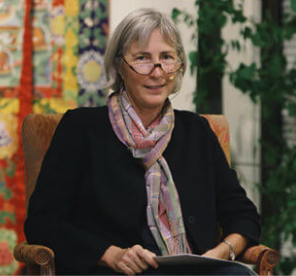
Marpa Kagyu, Methods of Liberation Part 1 from The Treasury of Precious Instructions
By Jamgon Kongtrul Lodro Taye
Translated by Elizabeth M. Callahan
The seventh volume of the series, Marpa Kagyu, is the first of four volumes that present a selection of core instructions from the Marpa Kagyu lineage of Tibetan Buddhism. This lineage is named for the eleventh-century Tibetan Marpa Chokyi Lodrö of Lhodrak who traveled to India to study the sutras and tantras with many scholar-siddhas, the foremost being Naropa and Maitripa. The first part of this volume contains source texts on mahamudra and the six dharmas by such famous masters as Saraha and Tilopa. The second part begins with a collection of sadhanas and abhisekas related to the Root Cakrasamvara Aural Transmissions, which are the means for maturing, or empowering, students. It is followed by the liberating instructions, first from the Rechung Aural Transmission. This section on instructions continues in the following three Marpa Kagyu volumes. Also included are lineage charts and detailed notes by translator Elizabeth M. Callahan.
Learn more about this series here: A Guide to the Treasury of Precious Instructions

